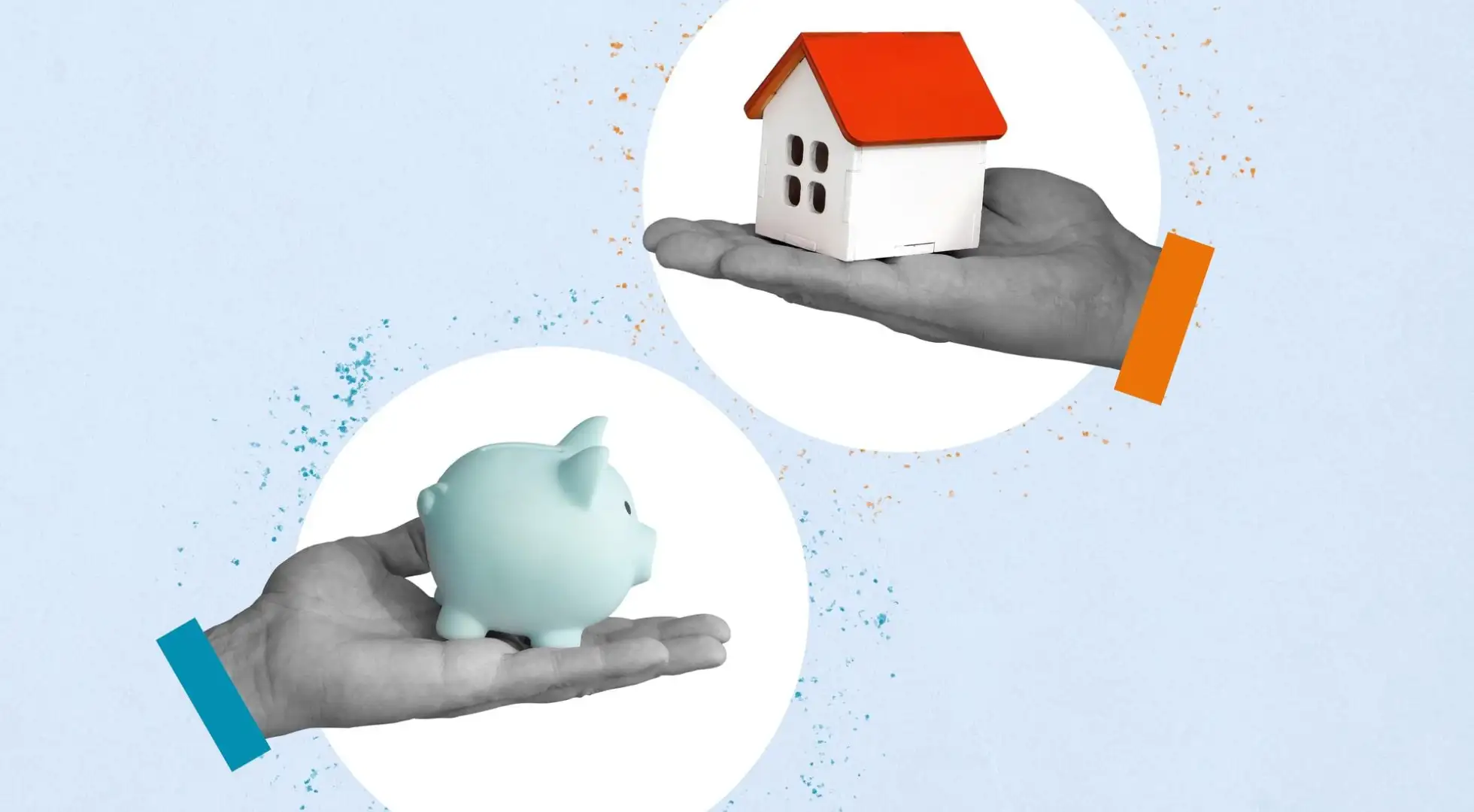Types of Conventional Loans and Their Uses

Conventional loans come in all shapes and sizes and offer the flexibility to finance just about any real estate transaction, from purchasing your dream home to refinancing and renovating a multifamily investment property.
When it comes to buying or refinancing a home, the vast majority of borrowers choose conventional loans. While other mortgages, such as those insured by the Federal Housing Administration (FHA), can be better in some situations, numerous types of conventional loans offer far more variety and flexibility than government-backed alternatives.
Conventional Loans: The Basics
Conventional loans make up the majority of all residential real estate mortgages. Contrary to popular belief, however, they are not just one single type of loan. There are numerous types of conventional mortgages designed to fit the unique needs of different borrowers.
For example, you can use a conventional loan to:
Purchase a property
Refinance your existing mortgage
Fund all sorts of renovations and improvements
Build a brand-new home
In addition to their different uses, conventional loans vary in other ways, including repayment length, interest rate structure, and down payment requirements. Throughout this article, we'll cover many types of conventional home loans and how each can be a practical solution for achieving your real estate funding goals.
Note: While the term "conventional loan" most commonly refers to mortgages that follow the guidelines and eligibility requirements established by Fannie Mae and Freddie Mac, any mortgage issued by private lenders and not insured by a government agency is considered conventional.
Conventional Loans by Use
What, exactly, can you do with a conventional loan? Here are some of their most common uses.
Purchase a Primary Residence
Conventional loans may not be your only option for purchasing your primary residence, but they're often the most flexible. Government-backed alternatives typically have more stringent property requirements, meaning homes that do not qualify for financing through the FHA, VA, or USDA can often meet the more relaxed conventional appraisal standards.
Want to purchase a multifamily property and live in one of the units while earning rental income from the others? You can do that with a conventional loan as well. Plus, thanks to recent guideline changes, you can do so with as little as 5% down.
Purchase a Vacation Home or Investment Property
If you’re planning to buy a vacation home or investment property, conventional loans are going to be your best bet. That’s because government-backed financing is almost exclusively limited to primary residences – second homes and investments do not qualify.
Refinance an Existing Mortgage
Already own a home and want to refinance your current mortgage to lower your interest rate or reduce your monthly payments? You can do that with a conventional loan, too. In fact, many homeowners who initially took out an FHA loan because of the program's lower eligibility requirements often refinance to conventional to eliminate their costly mortgage insurance premiums.
There are also conventional cash-out refinance options that allow you to adjust the terms of your loan while simultaneously tapping into your built-up equity to receive a lump sum of cash back at closing.
Nearly all types of conventional loans can be used for a refinance, even those designed for lower-income borrowers or to finance the cost of home repairs.
Purchase or Refinance and Renovate
You can even use conventional mortgages to purchase a home and finance renovations or improvements. Best of all, conventional renovation loans are based on the property's future "as-completed" value, meaning you can often borrow more than with just a standard mortgage.
On top of purchasing and fixing up a new property, you can use a conventional rehab loan to refinance and renovate a home you already own.
Some of the most common conventional renovation loans include:
Fannie Mae’s HomeStyle Renovation
Freddie Mac’s CHOICERenovation
Construct a New Home
Looking to build a new home from the ground up? There are types of conventional loans that allow you to fund nearly every aspect of construction, including the purchase of land to build on.
You can get a short-term conventional construction mortgage solely to pay for the build or opt for a single-close construction-to-permanent loan that automatically converts into long-term financing once your home is move-in ready.
Even though there are government-backed construction alternatives, they’re often difficult to find as very few lenders offer them. Conventional construction loans, on the other hand, are widely available and generally considered the easiest type of residential construction financing to obtain.
Conforming vs Non-Conforming Loans
As we touched on before, most types of conventional loans adhere to the lending guidelines established by Fannie Mae and Freddie Mac. However, there are plenty of other non-conforming mortgages that offer greater flexibility, albeit often with stricter requirements or higher interest rates.
Conforming Loans
Fannie Mae and Freddie Mac are government-sponsored enterprises (GSEs) that provide stability and liquidity to the US mortgage market. Loans that follow their established lending guidelines are called "conforming."
While there are many rules for conforming loans, some of the most prominent requirements include:
Credit score of 620 or higher
Maximum debt-to-income (DTI) ratio of 50%
At least a 3% down payment
Loan amount within set limits, currently $806,500 for single-unit properties in most of the country
The overwhelming majority of commonly available types of conventional loans are conforming. However, while all conforming loans are conventional, not all conventional loans are conforming.
Non-Conforming/Portfolio Loans
Non-conforming loans do not abide by Fannie Mae and Freddie Mac standards. While conforming mortgages are typically sold to the GSEs, where they're repackaged and securitized for institutional investors, lenders often retain non-conforming loans within their own portfolios. As such, you'll commonly see them referred to as "portfolio loans."
Jumbo Loans
Jumbo loans are a type of non-conforming conventional loan that does not fall within the loan limits established by the Federal Housing Finance Agency (FHFA). Since FHFA limits are based on the typical cost of purchasing a home, jumbo loans are most commonly associated with high-end and luxury properties.
What, precisely, does it take to constitute a jumbo mortgage? For single-family residences in most parts of the United States, a jumbo loan is one that is larger than the current Fannie Mae and Freddie Mac limit. However, multi-unit properties have higher conforming limits, meaning that you can borrow well over $1 million for a four-unit home in the majority of locales without needing a jumbo loan.
Because of the added risk, most jumbo mortgages have stricter eligibility requirements. This means you'll typically need a higher credit score, lower DTI, and larger down payment than standard conforming mortgages.
Note: Areas designated by the FHFA as "high-cost" have expanded loan limits, meaning you can borrow more than the standard limit without going jumbo. Loans that exceed the baseline limit but are still within high-cost limits are referred to as "high-balance conventional loans."
Non-QM Loans
Non-qualified mortgages, commonly referred to as non-QM, are a type of non-conforming loan. These mortgages do not meet the standards established by the Consumer Financial Protection Bureau (CFPB) in the wake of the 2008 economic crisis.
Non-QM financing can include stated-income loans, mortgages with balloon payments, and those with a repayment schedule which leads to negative amortization.
While there may be some situations where non-QM loans might make sense, borrowers should typically be very wary of the often high-risk and high-cost mortgages.
Fixed vs Adjustable Rates
When looking at the different types of conventional loans in regard to their interest structure, you’ll come across two unique options: fixed-rate and adjustable-rate.
Fixed-Rate Conventional Loans
Fixed-rate conventional loans have an interest rate that remains consistent for the entire repayment period. With this type of conventional loan, your interest rate is established when you take out your mortgage and cannot be changed by your lender. As such, fixed-rate loans have the same principal and interest repayment cost every single month.
Borrowers who take out a fixed-rate loan benefit from predictable payments and are protected if overall interest rates rise. In low-rate environments, such as in the early 2020s when rates dipped below 3%, borrowers almost exclusively opt for fixed-rate mortgages.
When rates are declining, however, having a fixed rate means you'll need to refinance your loan in order to take advantage of lower financing costs. While most homeowners can easily refinance and drop their rates, doing so means paying for closing costs, which are often 2% to 4% of their mortgage balance.
Adjustable-Rate Mortgages (ARMs)
Adjustable-rate mortgages (ARMs) are structured with an interest rate that changes over time. These types of conventional loans usually begin with a rate that's fixed for a certain period – often three or five years – but then adjusts either annually or every six months.
The interest rates for ARMs are most commonly tied to the Secured Overnight Financing Rate (SOFR), meaning that when the SOFR rises, so will your monthly payments. However, if rates are declining, your monthly mortgage payment could drop without needing to refinance your loan.
In many cases, adjustable-rate mortgages will have reduced rates for their initial introductory period, often causing them to be cheaper than fixed-rate alternatives – at least for the time being. This makes ARMs attractive to borrowers who plan to sell or refinance before their first interest cost adjustment.
Conventional Loans by Loan Length
Almost all types of conventional loans can be obtained in various loan lengths. While 30-year and 15-year mortgages are most common, other popular alternatives include 10, 20, and 25-year loans. You can even find conventional mortgages with lengths up to 40 years, although these are considered non-conforming as GSE guidelines cap their repayment term at 30 years.
How does your loan length impact your payments? Loans with shorter terms require you to repay your loan balance faster, meaning you'll have larger monthly payments since you're repaying more of your principal amount each month.
The upside, however, in addition to fully owning your home sooner, is that you will pay less in lifetime interest on loans with a shorter length. In many cases, these savings can be substantial.
For Example: Here’s what your monthly principal and interest (P&I) payments and lifetime interest costs would look like on a $300,000 mortgage with an example 7% interest rate based on various loan lengths:
Loan Length | Monthly P&I | Lifetime Interest |
15-Year | $2,696 | $185,367 |
20-Year | $2,326 | $258,215 |
25-Year | $2,120 | $336,101 |
30-Year | $1,996 | $418,527 |
Rates and payments mentioned are for example purposes only.
It’s worth noting that while we used a constant interest rate of 7% in our example, shorter loan terms generally equate to lower interest rates, which can increase your overall savings even further.
Conventional Loans by Down Payment
Down payment requirements vary by the type of conventional loan you’re applying for. However, these program requirements are just the minimum – many buyers opt to put a larger amount down to reduce their payments and qualify for lower private mortgage insurance (PMI) rates.
Data from the National Association of Realtors (NAR) shows the median downpayment for first-time homebuyers was 9% in 2024. In contrast, repeat homebuyers put down 23%. Overall, this equated to a median down payment of 18% for all home purchases.
Keep in mind, however, that you can qualify for a conventional loan with much less, with many borrowers eligible with as little as 3% down. Through the use of down payment assistance, you may even be able to eliminate the need for a down payment altogether.
3% Down Conventional Loans
Numerous types of conventional loans allow for as little as a 3% down payment. These programs are typically available to first-time homebuyers and low-to-moderate earners bringing in no more than 80% of their area median income (AMI).
These 3% down conventional loans include:
Fannie Mae Conventional 97, also referred to as the Flex 97 (first-time homebuyer)
Freddie Mac HomeOne (first-time homebuyer)
Fannie Mae HomeReady (borrowers up to 80% of AMI)
Freddie Mac Home Possible (borrowers up to 80% of AMI)

“Traditionally, many lenders want 20% down, and that can often be a huge hurdle. Luckily, there are mortgage programs engineered to ease the burden. Such programs not only address immediate, current financial stress but also widen opportunities for home ownership among applicants who otherwise will be renters of properties.”
5% Down Conventional Loans
For all other applicants who are not first-time homebuyers and do not meet the low-to-moderate income requirements for a 3% down mortgage, conventional loans are available with just 5% down when purchasing a home you plan to live in as your primary residence.
This is the standard conventional loan down payment, with these types of conventional mortgages frequently referred to as a “conventional 95.”
Recent Update: In the past, purchasing a multifamily primary residence required a minimum down payment of at least 15%. However, recent changes to conventional loan guidelines allow buyers to buy a property with up to four units, as long as they plan to live in one full-time, with as little as 5% down.
10% Down Conventional Loans
Planning to purchase a second home or vacation property? Down payment requirements are slightly higher, with loans for these types of transactions available with 10% down.
Keep in mind, however, that government-backed mortgages typically do not allow you to finance anything other than your primary residence, meaning that conventional loans are still your best bet for this kind of purchase.
15% Down Conventional Loans
If you’re looking to purchase an investment property for a fix-and-flip or to use as a source of rental income, you can do so with as little as 15% down using a conventional loan.
Government-backed loans do not allow these types of transactions.
20% Down or More
There’s a common misconception that obtaining a conventional loan requires putting down at least 20%. It is simply not true under current lending standards.
However, conventional borrowers who can put at least 20% down do have one big advantage: avoiding private mortgage insurance.
To protect against loss in the event that a mortgagee quits making their payments, lenders require all loans with less than 20% down (or 20% equity for refinances) to carry PMI. Policy costs are typically assessed monthly and added in as part of the borrower's payments.
Private mortgage insurance is risk-based, meaning applicants with lower credit scores and less equity will pay higher premiums. However, PMI is cancellable once you reach 20% equity in your home, with federal law requiring lenders to remove it once your loan reaches 78% of your property's appraised value.
Conventional Loans Offer Flexibility and Lots of Options
Ultimately, conventional mortgages are not “one size fits all.” There are countless types of conventional loans with varying uses and characteristics designed to meet the needs of a multitude of different buyers. No matter your financing goals, there’s likely a conventional mortgage that’s the perfect match for you.








